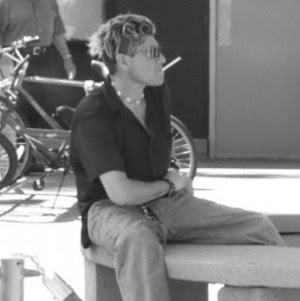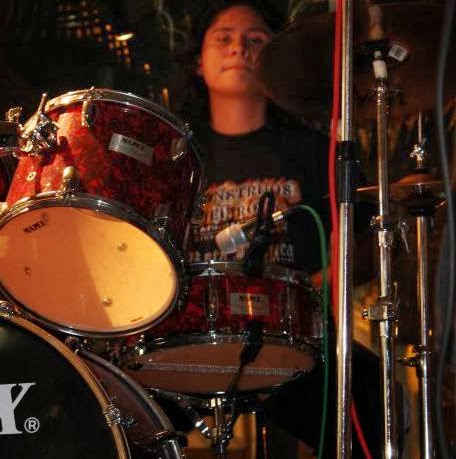Sergio Daniel Carranza
age ~59
from Austin, TX
- Also known as:
-
- Sergio D Carranza
- Phone and address:
-
40 Interstate 35, Austin, TX 78701
5124808133
Sergio Carranza Phones & Addresses
- 40 Interstate 35, Austin, TX 78701 • 5124808133
- 40 N Interstate 35 APT 4B1, Austin, TX 78701 • 5125890718
- 501 Columbine Ave, Cedar Park, TX 78613 • 5122609578
- 2011 Jasper Ln, Cedar Park, TX 78613 • 5129969033
- Chico, CA
- Travis, TX
- Maryland Heights, MO
- 2011 Jasper Ln, Cedar Park, TX 78613 • 5124266153
Work
-
Position:Building and Grounds Cleaning and Maintenance Occupations
Education
-
Degree:Bachelor's degree or higher
Us Patents
-
Optical Interconnect Device
view source -
US Patent:20050084216, Apr 21, 2005
-
Filed:Oct 16, 2003
-
Appl. No.:10/687329
-
Inventors:Lizhang Yang - Austin TX, US
Sergio Carranza - Cedar Park TX, US
Michael Jessup - Dripping Springs TX, US -
International Classification:G02B006/38
-
US Classification:385071000
-
Abstract:Disclosed herein is an optical interconnect device comprising (a) a plurality of fiber optic cables, each cable having two ends and comprising at least one optical fiber surrounded by a protective jacket where the diameter of the fiber optic cable is larger than the diameter of the optical fiber and where the protective jacket at at least a first end of the fiber optic cable has been removed thereby exposing the optical fibers; (b) a ribbonized assembly encasing a portion of the first end of the fiber optic cable and the optical fibers, where the optical fibers in the ribbonized assembly lie parallel to one another and has a first pitch; and (c) a ferrule attached to the ribbonized assembly, the ferrule having a plurality of internal grooves having a second pitch. The first pitch of the optical fibers is substantially equal to the second pitch of the ferrule.
-
Apparatus And Method For Transitioning Fiber Optic Cables
view source -
US Patent:20050084221, Apr 21, 2005
-
Filed:Oct 16, 2003
-
Appl. No.:10/687195
-
Inventors:Lizhang Yang - Austin TX, US
Sergio Carranza - Cedar Park TX, US
Michael Jessup - Dripping Springs TX, US -
International Classification:G02B006/44
-
US Classification:385114000, 385137000
-
Abstract:Disclosed herein are an apparatus and a method of making a fiber optic device. The apparatus comprises at least one channel. Each channel comprises (a) an input zone for holding a plurality of fiber optic cables, each cable having at least one optical fiber; (b) a transition zone adjacent to the input zone; (c) an output zone adjacent to the transition zone, the output zone comprising at least one slot, each slot having a maximum width that is equal to a multiple of the optical fiber diameter plus one half optical fiber diameter.
-
Optical Fiber Polishing Method
view source -
US Patent:20060072879, Apr 6, 2006
-
Filed:Sep 30, 2004
-
Appl. No.:10/954453
-
Inventors:Lizhang Yang - Austin TX, US
Sergio Carranza - Cedar Park TX, US
Vern Radewald - Austin TX, US -
International Classification:G02B 6/36
-
US Classification:385085000, 385076000, 385078000
-
Abstract:Disclosed is a method for polishing a multi-fiber ferrule assembly and the optical fibers protruding from the ferrule using at least one particle loaded film, at least one slurry, and at least one flocking film.
-
Configurable Optical Connector
view source -
US Patent:20210389527, Dec 16, 2021
-
Filed:Aug 27, 2021
-
Appl. No.:17/458736
-
Inventors:- St. Paul MN, US
Sergio D. Carranza - Austin TX, US
Boon K. Lee - Leander TX, US
Michael A. Haase - St. Paul MN, US
Terry L. Smith - Roseville MN, US -
International Classification:G02B 6/38
-
Abstract:Each optical cable includes an array of at least one optical waveguide and at least one optical ferrule attached to the array of optical waveguides. The housing includes a first housing portion and a second housing portion engaged with the first housing portion. The second housing portion comprises at least one carrier and one frame. The carrier and frame of the second housing portion are configured to support the one or more optical cables. The first housing portion and the second housing portion are configured such that mechanical engagement of the first housing portion with the second housing portion moves the carrier relative to the frame. Movement of the carrier relative to the frame causes a bend in each optical waveguide and rotation of each ferrule. The bend provides a predetermined spring force of the optical waveguides at a predetermined angle of the ferrule.
-
Configurable Optical Connector
view source -
US Patent:20200088953, Mar 19, 2020
-
Filed:Dec 18, 2017
-
Appl. No.:16/470599
-
Inventors:- St. Paul MN, US
Sergio D. Carranza - Austin TX, US
Boon K. Lee - Leander TX, US
Michael A. Haase - St. Paul MN, US
Terry L. Smith - Roseville MN, US -
International Classification:G02B 6/38
-
Abstract:An optical connector () comprises one or more optical cables () disposed within a housing (). Each optical In cable () includes an array of at least one optical waveguide () and at least one optical ferrule () attached to the array of optical waveguides (). The housing () includes a first housing portion () and a second housing portion () engaged with the first housing portion (). The second housing portion () comprises at least one carrier () and one frame (). The carrier () and frame () of the second housing portion () are configured to support the one or more optical cables (). The first housing portion () and the second housing portion () are configured such that mechanical engagement of the first housing portion () with the second housing portion () moves the carrier () relative to the frame (). Movement of the carrier () relative to the frame () causes a bend in each optical waveguide () and rotation of each ferrule (). The bend provides a predetermined spring force of the optical waveguides () at a predetermined angle of the ferrule ().
Resumes

Carpenter Foreman En Brasfield & Gorrie, Llc
view sourcePosition:
carpenter foreman at Brasfield & Gorrie, LLC
Location:
Atlanta y alrededores, Estados Unidos
Industry:
Construction
Work:
Brasfield & Gorrie, LLC Actualmente tiene este puesto de trabajo
carpenter foreman
carpenter foreman

Sergio Carranza
view sourceFlickr
Youtube
Classmates

Parkview Middle School, A...
view sourceGraduates:
Katrina Allensworth (1984-1986),
Anirudh Ani (2004-2008),
Travis Gonzales (1990-1994),
Thomas Martinez (1988-1992),
Sergio Carranza (1998-2002)
Anirudh Ani (2004-2008),
Travis Gonzales (1990-1994),
Thomas Martinez (1988-1992),
Sergio Carranza (1998-2002)

South-East High School, P...
view sourceGraduates:
Sergio Carranza (1984-1988),
Sharon Rattan (1973-1977),
Erica Billy (1985-1989),
Claude Benjamin (1978-1982)
Sharon Rattan (1973-1977),
Erica Billy (1985-1989),
Claude Benjamin (1978-1982)

Northern Arizona Universi...
view sourceGraduates:
Gale Kovalcik (1991-1994),
Randy Schulzkump (1992-1999),
Jim Steimer (1979-1983),
Sergio Carranza (2004-2006)
Randy Schulzkump (1992-1999),
Jim Steimer (1979-1983),
Sergio Carranza (2004-2006)

Sergio Carranza
view source
Luis Sergio Carranza
view source
Sergio Carranza
view source
Sergio Leon Carranza
view source
Sergio Carranza Javier
view source
Sergio Carranza Jr.
view source
Sergio Carranza
view source
Sergio Carranza
view sourceGoogleplus

Sergio Carranza
Work:
Avicola el rocio
Education:
Mixto viru

Sergio Carranza

Sergio Carranza

Sergio Carranza

Sergio Carranza

Sergio Carranza

Sergio Carranza

Sergio Carranza
Plaxo

Sergio Carranza
view sourceDatco Perú
Myspace

Sergio Carranza (Carranza...
view sourceSergio Carranza (Carranza)'s profile on Myspace, the leading social entertainment destination powered by the passion of our fans.
Get Report for Sergio Daniel Carranza from Austin, TX, age ~59













